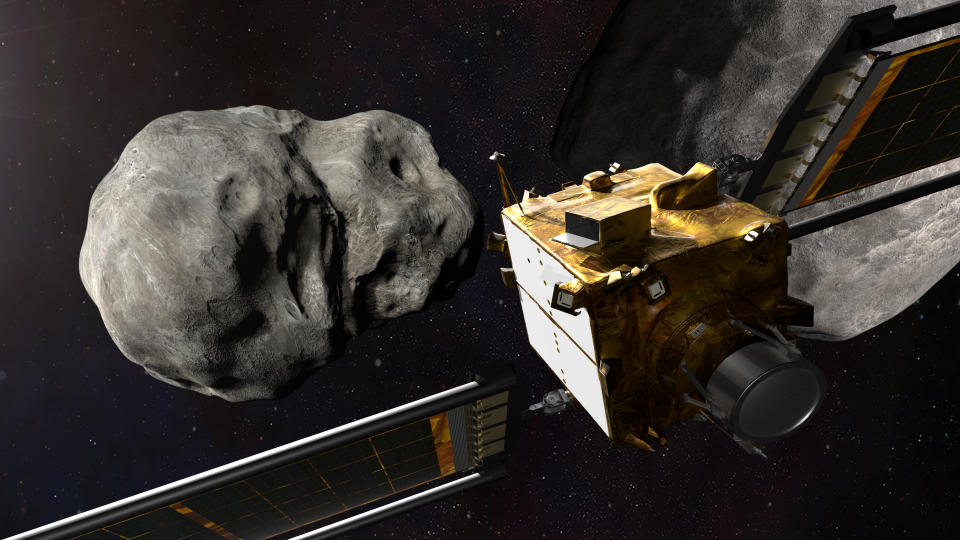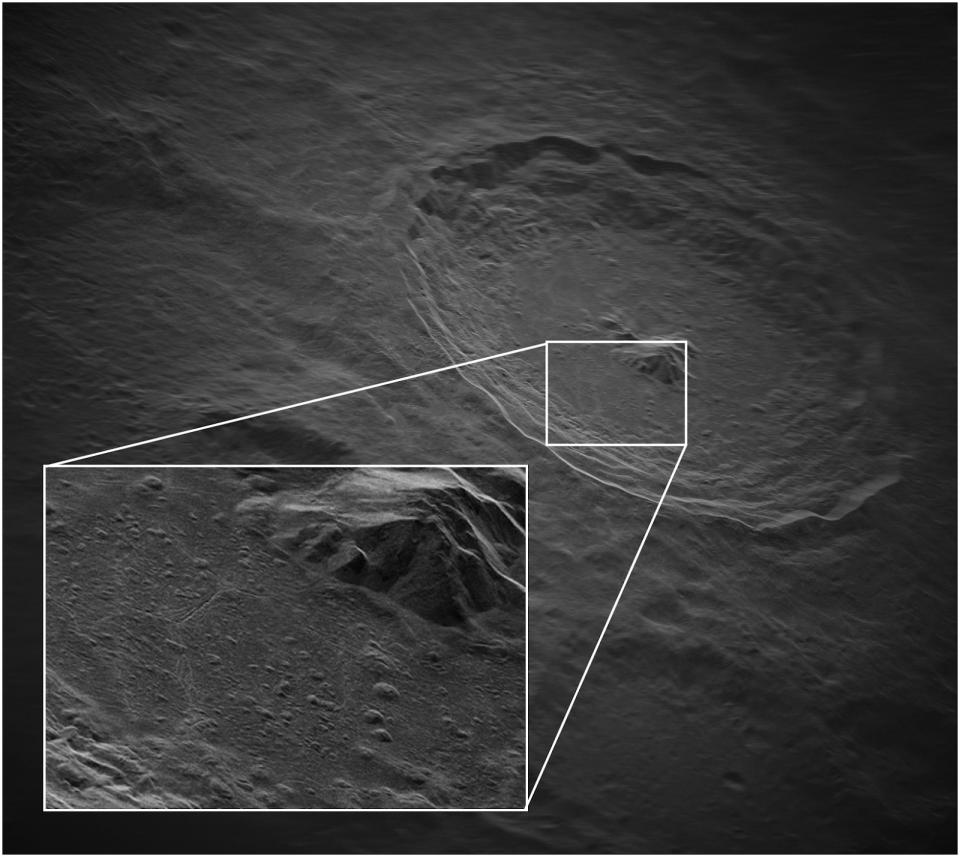Ground-based radar systems could play a unique role in planetary defense, helping humanity protect Earth by spotting asteroids and comets on potentially devastating collision courses with our planet.
This was the conclusion of the National Academies in their 2023-2032 Planetary Science and Astrobiology Decadal Survey. Currently, only one radar system on Earth focuses on detecting threatening space rocks: NASA’s Goldstone Solar System Radar, which is part of the Deep Space Network (DSN).
On Saturday (Feb. 17), scientists at the annual conference of the American Association for the Advancement of Science in Denver, Colorado, unveiled results indicating that ground-based radar could have a significant impact on asteroid detection, and thus on the defense of the planet.
Future efforts in this vein include the National Radio Astronomy Observatory’s (NRAO) Next Generation RADAR System (ngRADAR), which uses the National Science Foundation’s Green Bank Telescope (GBT) and other facilities to expand humanity’s ability to detect asteroids and comets in the environment. of the Earth using radar.
Related: For the first time ever, water has been found on the surface of an asteroid
Scientists are aware of more than 1.1 million asteroids in the solar system, and more than 30,000 of them are so-called Near-Earth Objects (NEOs). NASA’s Center of Near Earth Object Studies (CNEOS) estimates that about 90% of NEOs wider than about 1 kilometer have been discovered.
Furthermore, CNEOS has determined that there are currently no NEO orbits that threaten Earth, at least in the next century. But that doesn’t mean that within the remaining 10% of undiscovered NEOs there isn’t an object that could threaten our planet.
Radar, a word that comes from the acronym radio detection and ranging, uses radio waves to determine the distance and speed of targets. Radar systems consist of transmitter antennas, which transmit radio waves, and receiving antennas, which collect them as they are reflected back. Radio waves reflected from space rocks can help discover asteroids or comets and study the nearby solar system in unprecedented detail.
“There are many applications for the future of radar, from substantially advancing our knowledge of the solar system to informing future robotic and human spaceflight and characterizing dangerous objects that stray too close to Earth,” said Tony Beasley, director of NRAO, in a statement.
Radar could give DART an early warning
Earth’s geological history is littered with examples of the destructive impact asteroids have had on our planet and its species. The most striking example of this is the 200-kilometer-wide Chicxulub crater on the Yucatán Peninsula, Mexico. This crater was created 66 million years ago by the impact of a 10 kilometer wide asteroid.
That asteroid impact caused the Cretaceous-Tertiary (KT) extinction, which wiped out three-quarters of the planet’s plant and animal species, including non-avian dinosaurs.
To ensure that humanity doesn’t go the way of the dinosaurs, space agencies are developing strategies to guide asteroids and comets into orbits that could one day impact Earth. Perhaps the most notable example of this defense mechanism is NASA’s Double Asteroid Redirection Test (DART) mission. In September 2022, DART collided with the smaller body of the twin asteroid system, Didymos and Dimorphos. The purpose of this was to see if a kinetic impact could reorient an asteroid’s orbit enough to send it off a collision course. In short, it worked.

Other methods of asteroid diversion include the obvious – detonating a nuclear device on the surface – the sublime – towing an asteroid away with a solar sail – and even the downright strange – painting it black one side of an asteroid so that it absorbs more sunlight, shifting its direction. center of mass and changes its orbit. Although it sounds extremely far-fetched, there is fundamental research behind the latter.
However, all these potential distraction methods require one thing: time.
The lead times required for asteroid diversion missions can range from many years to many decades. That means space agencies need a lot of advance warning before implementing any method to adjust an asteroid’s orbit.
The GBT is proposed as an important tool in detecting asteroids entering Earth’s orbit because it is the world’s largest fully steerable radio telescope. This means it can see about 85% of the sky above Earth and quickly track objects as they race through its field of view. Such a capability would allow space agencies to determine the location, size and speed of potentially dangerous NEOs on faster timelines, scientists say.
“Recently, the GBT helped confirm the success of NASA’s DART mission, the first test to see if humans can successfully alter the trajectory of an asteroid,” said Patrick Taylor, a scientist at NRAO and ngRADAR’s project director, in the statement.
Radar already reveals the solar system
During initial testing, the GBT’s ngRADAR system already demonstrated its ability to reveal solar system inhabitants in incredible detail.
“With support from Raytheon Technologies, ngRADAR pilot tests on the GBT – using a low-power transmitter and less power than a standard microwave – have provided the highest resolution images of the moon ever taken from Earth,” added Taylor added. “Imagine what we could do with a more powerful transmitter.”
So in addition to detecting and tracking asteroids and comets, radar could help planetary scientists study the geology of relatively nearby planets and moons. This could give us an idea of how these bodies have evolved over the 4.6 billion year history of the solar system.


Not bad for a technology that has been around since 1935, when the first working radar system was built in the form of six wooden towers – two for transmitting antennas and four for receiving antennas. That system was built at Orford Ness in the Suffolk region of Great Britain, and as scientists explain, NASA’s Goldstone facility hasn’t actually evolved much since shortly after.
“The public may be surprised to learn that the technology we use in our current radar at Goldstone has not changed much since World War II. For 99% of our observations we transmit and receive through this one antenna,” said Marina Brozović from NASA. in the statement. “New radar transmitter designs, such as ngRADAR on the GBT, have the potential to significantly increase output power and waveform bandwidth, enabling even higher resolution imaging.
“It will also provide a scalable and more robust system by using telescope arrays to increase the collection area.”
Related stories:
– Fragments of asteroid 2024 BX1 are rare meteorites as old as the solar system itself
– NASA opens the OSIRIS-REx asteroid sample canister (photos)
– How Earth’s new Rubin Observatory will usher in the next era of asteroid space missions
“NRAO is an ideal organization to lead these efforts because of the instruments we have available to receive radar signals, as the Very Long Baseline Array did in our pilot ngRADAR project,” NRAO science communications director Brian Kent said in the statement . “Future facilities such as the next-generation Very Large Array will create a powerful receiver combination for planetary science.”